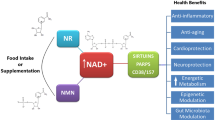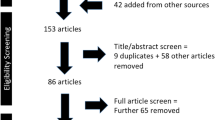Abstract
Purpose
The purpose of this study was to investigate the potential effects of a meal and grapefruit juice on the pharmacokinetics of blonanserin and its metabolite N-desethyl blonanserin in healthy Chinese volunteers.
Methods
This was a single-centre, open-label, fixed-sequence study, where 12 healthy Chinese volunteers received a single dose of 8 mg blonanserin after an overnight fast in period 1 (reference), a high-fat meal during period 2 and with co-administration of 250 mL of grapefruit juice in period 3. The washout period was 7 days. Series of plasma samples were collected after each dose to determine concentrations of blonanserin and its metabolite N-desethyl blonanserin using liquid chromatography-tandem mass spectrometry. Pharmacokinetic parameters were estimated by non-compartmental analysis and compared between periods by standard average bioequivalence ANOVA. Adverse events were monitored throughout the study.
Results
All subjects completed the study. High-fat meals significantly increased blonanserin exposure (AUCt) 2.58-fold (90% CI 2.21, 3.02), relative to the reference period. Co-administration of blonanserin with grapefruit juice remarkably prolonged elimination half-life of blonanserin (from 9.7 to 21.4 h) and significantly increased exposures to blonanserin and N-desethyl blonanserin by 5.82-fold (90% CI 4.57, 7.42) and 1.81-fold (90% CI 1.65, 1.98), respectively.
Conclusions
These results suggested that blonanserin was largely metabolised in the intestinal tract before becoming systemically available, and both food and grapefruit juice enhanced exposure to blonanserin and N-desethyl blonanserin. Grapefruit juice increased bioavailability and may have reduced systemic clearance of blonanserin. Further intestinal CYP3A4 and hepatic CYP3A4 might be postulated to explain the delayed elimination of blonanserin. Dose adjustment of blonanserin is needed on the basis of co-intake of known strong CYP3A4 inhibitor. Patients taking high-dose blonanserin also need to be cautious about the ingestion of grapefruit juice.

Similar content being viewed by others
References
Deeks ED, Keating GM (2010) Blonanserin: a review of its use in the management of schizophrenia. CNS Drugs 24:65–84
Dainippon Sumitomo Pharma Co., Ltd (2016) Lonasen (Blonanserin): pharmaceutical interview forms (in Japanese), 9th edition revised in Nov. 2016
Tatara A, Shimizu S, Masui A, Tamura M, Minamimoto S, Mizuguchi Y, Ochiai M, Mizobe Y, Ohno Y (2015) Atypical antipsychotic properties of AD-6048, a primary metabolite of blonanserin. Pharmacol Biochem Behav 138:14–19
Chen X, Wang H, Jiang J, Chen R, Zhou Y, Zhong W, Liu H, Hu P (2014) The pharmacokinetic and safety profiles of blonanserin in healthy Chinese volunteers after single fasting doses and single and multiple postprandial doses. Clin Drug Investig 34:213–222
Saruwatari J, Yasui-Furukori N, Inoue Y, Kaneko S (2010) Effect of dose timing in relation to food intake on systemic exposure to blonanserin. Eur J Clin Pharmacol 66:899–902
Wen YG, Shang DW, Xie HZ, Wang XP, Ni XJ, Zhang M, Lu W, Qiu C, Liu X, Li FF, Li X, Luo FT (2013) Population pharmacokinetics of blonanserin in Chinese healthy volunteers and the effect of the food intake. Hum Psychopharmacol 28:134–141
Abuhelwa Ahmad Y, Williams Desmond B, Upton Richard N, Foster David JR (2017) Food, gastrointestinal pH, and models of oral drug absorption. Eur J Pharm Biopharm 112:234–248
Mertens-Talcott SU, Zadezensky I, De Castro WV, Derendorf H, Butterweck V (2006) Grapefruit-drug interactions: can interactions with drugs be avoided? J Clin Pharmacol 46:1390–1416
Konig J, Muller F, Fromm MF (2013) Transporters and drug-drug interactions: important determinants of drug disposition and effects. Pharmacol Rev 65:944–966
Glaeser H, Bailey DG, Dresser GK, Gregor JC, Schwarz UI, McGrath JS, Jolicoeur E, Lee W, Leake BF, Tirona RG, Kim RB (2007) Intestinal drug transporter expression and the impact of grapefruit juice in humans. Clinical Pharmacology & Therapeutics 81:362–370
Paine MF (2004) Two major grapefruit juice components differ in time to onset of intestinal CYP3A4 inhibition. J Pharmacol Exp Ther 312:1151–1160
Veronese Maria L, Gillen Lisa P, Burke Joanne P, Dorval Ellen P, Hauck Walter W, Ed P, Waldman Scott A, Greenberg Howard E (2003) Exposure-dependent inhibition of intestinal and hepatic CYP3A4 in vivo by grapefruit juice. J Clin Pharmacol 43:831–839
Pirmohamed M (2013) Drug-grapefruit juice interactions. BMJ 346:f1
Ameer B, Weintrau RA (1997) Drug interactions with grapefruit juice. Clin Pharmacokinet 33:103–122
Fuhr U (1998) Drug interactions with grapefruit juice. Drug Saf 18:251–272
Shaik MN, LaBadie RR, Rudin D, Levin WJ (2014) Evaluation of the effect of food and ketoconazole on the pharmacokinetics of the smoothened inhibitor PF-04449913 in healthy volunteers. Cancer Chemother Pharmacol 74:411–418
Wang L, Zhang YH (2011) General considerations for postprandial bioequivalence study. https://www.cde.org.cn/dzkw.do?method=largePage&id=312166
Center for Drug Evaluation and Research, Food and Drug Administration (2002) Guidance for industry: Food-effect bioavailability and fed bioequivalence studies. https://www.fda.gov/RegulatoryInformation/Guidances/UCM126833
Center for Drug Evaluation and Research, Food and Drug Administration (2012) Guidance for industry: drug interaction studies—study design, data analysis, implications for dosing, and labeling recommendations. https://www.fda.gov/Drugs/GuidanceComplianceRegulatoryInformation/Guidances/UCM292362
Urumchi Adverse Drug Reaction Monitoring Center (2010) Common terminology criteria for adverse events grading system. https://www.xjda.gov.cn/WS01/CL0290/15737.html
Srinivas NR (2011) Blonanserin’s interesting food-effect observations: is lymphatic transport involved? Eur J Clin Pharmacol 67:975–976
Kang SP, Ratain MJ (2010) Inconsistent labeling of food effect for oral agents across therapeutic areas: differences between oncology and nononcology products. Clin Cancer Res 16:4446–4451
Inoue T, Osada K, Tagawa M, Ogawa Y, Haga T, Sogame Y, Hashizume T, Watanabe T, Taguchi A, Katsumata T, Yabuki M, Yamaguchi N (2012) Blonanserin, a novel atypical antipsychotic agent not actively transported as substrate by P-glycoprotein. Prog Neuro-Psychopharmacol Biol Psychiatry 39:156–162
Acknowledgements
All listed authors meet the criteria for authorship set forth by the International Committee for Medical Journal Editors. The authors would like to acknowledge all funds received in the research. The authors also thank all the subjects who participated in this study.
Funding
This work was supported by grants from the following: Key Program of Science and Technology of Guangdong Province (Grant No. 2012A080204017), Natural Science Foundation of Guangdong Province (Grant No 2015A030313808), Guangzhou Municipal Key Discipline in Medicine for Guangzhou Brain Hospital (Grant No. GBH2014-QN05) and Hospital Pharmacy Research Funds of Guangdong (Grant No. 2015A09). Blonanserin tablets were donated by Livzon Pharmaceutical Engineering R&D Center.
Author information
Authors and Affiliations
Contributions
Yu-Guan Wen, De-Wei Shang and Hai-Tang Hu were responsible for study design and quality assurance of clinical trial. Doctor Yue-Feng Zhang, Nurse Huan Peng and Nurse Ling-Fang Shen were responsible for conduct of the study especially clinical care. Xiao-Jia Ni, Hao-Yang Lu, Ming Zhang, Jin-Qing Hu and Chang Qiu determined plasma concentrations of blonanserin and N-desethyl blonanserin. Hai-Tang Hu obtained the approval of clinical study and performed oversight at the time the study was conducted. De-Wei Shang and Zhan-Zhang Wang completed the statistics and data analysis and prepared the manuscript.
Corresponding author
Ethics declarations
Conflict of interest
Hai-Tang Hu was an employee of and had stock/ stock options in Livzon Pharmaceutical Group Co., Ltd. at the time the work was done.
Ethical approval
All procedures performed in studies involving human participants were in accordance with the ethical standards of the institutional and/or national research committee and with the 1964 Helsinki Declaration and its later amendments or comparable ethical standards. The study protocol was reviewed and approved by the China Food and Drug Administration (approval number of clinical trial: 2011L00697) and the Ethics Committee of the Affiliated Brain Hospital of Guangzhou Medical University (Guangzhou Huiai Hospital) before enrolment (approval number: [2015] No. 002).
Informed consent
Informed consent was obtained from all individual participants included in the study before participation.
Electronic supplementary material
ESM 1
(DOCX 15 kb)
Suppl. Fig. 1.
Individual values of AUCt of blonanserin and N-desethyl blonanserin and the N-desethyl blonanserin to blonanserin ratio after single oral administration of 8 mg blonanserin in the fasting state, or in the presence of food and grapefruit juice. (GIF 23 kb)
Rights and permissions
About this article
Cite this article
Shang, DW., Wang, ZZ., Hu, HT. et al. Effects of food and grapefruit juice on single-dose pharmacokinetics of blonanserin in healthy Chinese subjects. Eur J Clin Pharmacol 74, 61–67 (2018). https://doi.org/10.1007/s00228-017-2340-1
Received:
Accepted:
Published:
Issue Date:
DOI: https://doi.org/10.1007/s00228-017-2340-1




